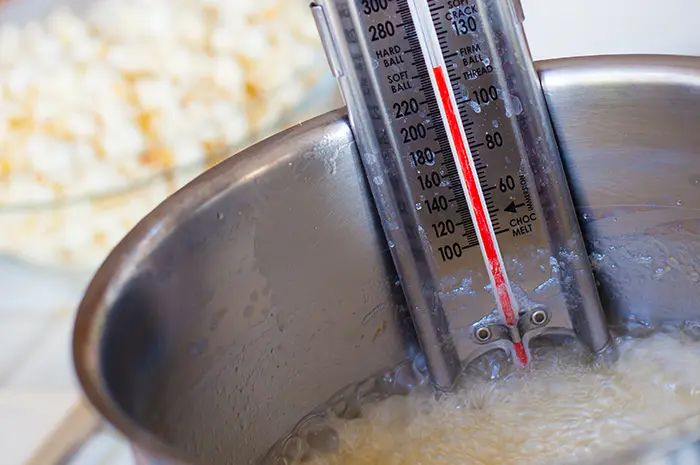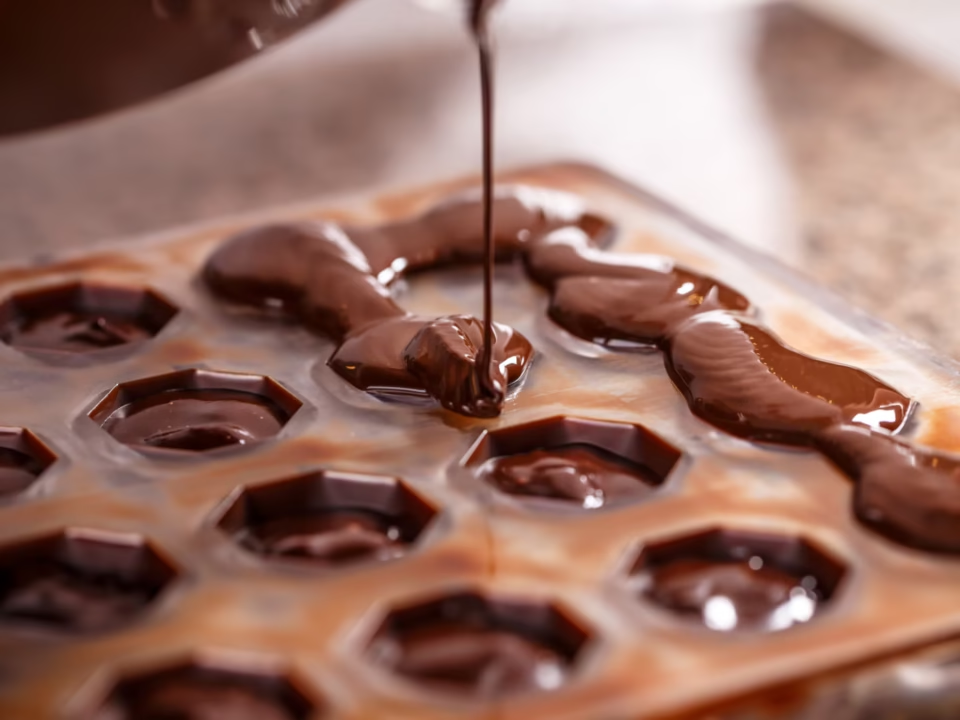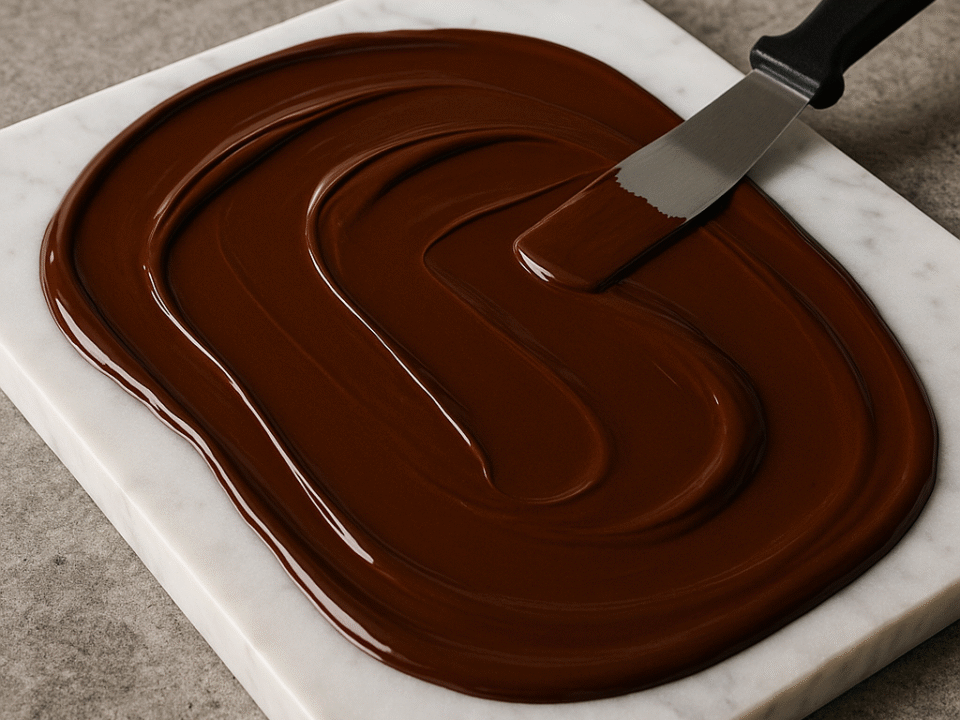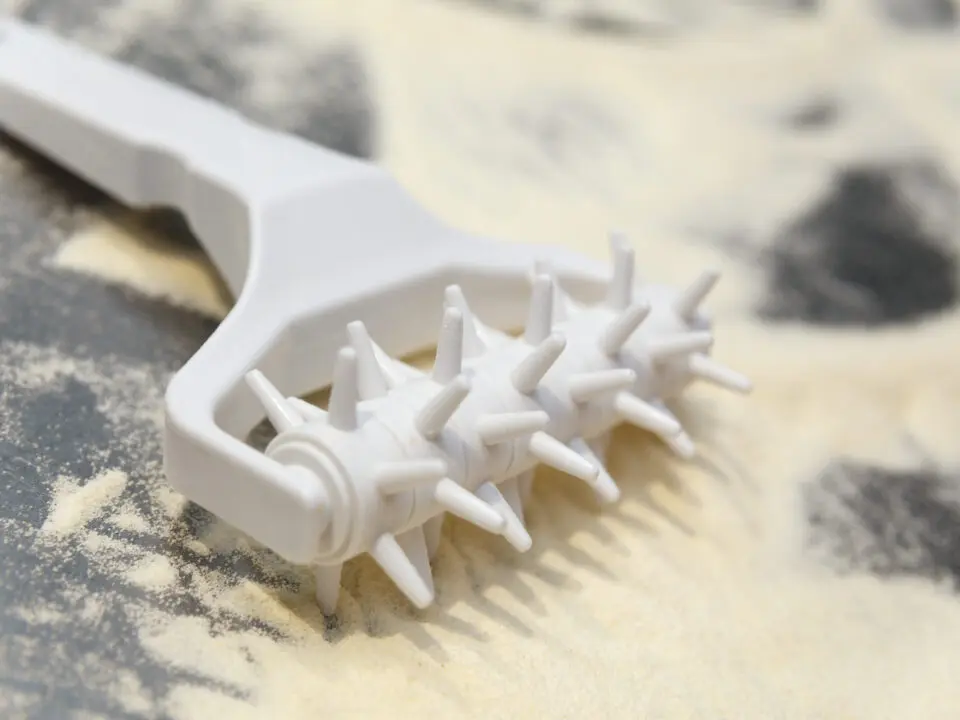
Berry Ganache – A Love Letter to Chocolate and Berries
June 11, 2025
Coconut Macaroons
June 30, 2025Crucial for Caramel, Italian Meringue and Toffee
If you’re the kind of home chef who gets a bit too excited about precision and sugar science (welcome to the club), let’s talk about a tool that often gets overlooked but makes a huge difference: the sugar thermometer. Also known as a candy thermometer, this little gadget has saved many batches of caramel from turning into burnt regrets—and made Italian meringue way less scary.
At Flux, we use one daily, especially when we’re playing with sugar stages. Whether it’s soft ball, hard crack, or somewhere in between, sugar moves fast. You get maybe 10 seconds between perfect and disaster. Having a sugar thermometer means you don’t have to guess.
A Quick Bit of Sugar History
Before thermometers became a kitchen thing, pastry chefs used something called the “cold water test.” Basically, you’d drop hot sugar into a bowl of water to see what texture it formed—stringy, soft, hard, etc. It worked, but it also led to a lot of burnt fingers and inconsistent results.
The candy thermometer changed the game. Suddenly, recipes could be shared with precise numbers, and sugar work became something even home chefs could tackle with confidence. Think of it as the difference between “bake until golden brown” and “bake at 180°C for 12 minutes.” One leaves room for chaos. The other gets you a perfect finish.
What It’s Used For
A sugar thermometer isn’t just for making lollies (though it’s brilliant for that). Here are a few places it earns its keep:
1. Caramel
You want deep amber colour and a smooth, pourable texture—but if it goes too far? You’re left with bitter, burnt sugar. Aim for around 170°C for classic caramel. A thermometer gives you that heads-up moment just before it hits the edge.
2. Italian Meringue
The trick with Italian meringue is pouring hot sugar syrup into whipped egg whites. The syrup needs to be 115°C–120°C so it cooks the eggs slightly, giving you a stable, glossy meringue perfect for torching. Too cool? You get soup. Too hot? Scrambled eggs. No one wants that.
3. Toffee and Brittle
Hard crack stage (around 150°C) is where sugar becomes snappy and crisp. That’s your target for toffees, brittles, and honeycomb. Without a thermometer, you’re basically guessing with molten lava. Not ideal.
Digital vs. Traditional
You’ll find two main types: classic mercury-style thermometers and modern digital ones. Both work, but digital tends to be quicker and easier to read. Just make sure you get one that clips to the side of your pot and has a high enough temperature range (up to 200°C is best).
Also: don’t stir with it. That’s a fast way to ruin your sugar and your thermometer. It’s there to observe, not participate.
Do You Really Need One?
If you’re doing anything with cooked sugar more advanced than a cup of tea, yes. Could you technically get away with guessing? Maybe. But you’ll burn fewer batches, waste less sugar, and get more consistent results with a thermometer in your kitchen drawer.
Think of it like a sharp knife or a good rolling pin—it’s one of those tools that makes you better and makes the process way more enjoyable.
Thoughts from the Bench at Flux
Sugar can be temperamental. It doesn’t like distractions. It doesn’t forgive multitasking. But with the right tools (and maybe a little patience), it behaves beautifully. The sugar thermometer is one of those quiet MVPs that keeps everything on track. You might not think about it until you’re elbow-deep in syrup, but when you’ve got one in your kit, you’ll wonder how you ever did without it.
So if you’re levelling up your dessert game and eyeing off caramel tarts, spun sugar, or pillowy meringue—go grab a thermometer. Your future self (and your guests) will thank you.



